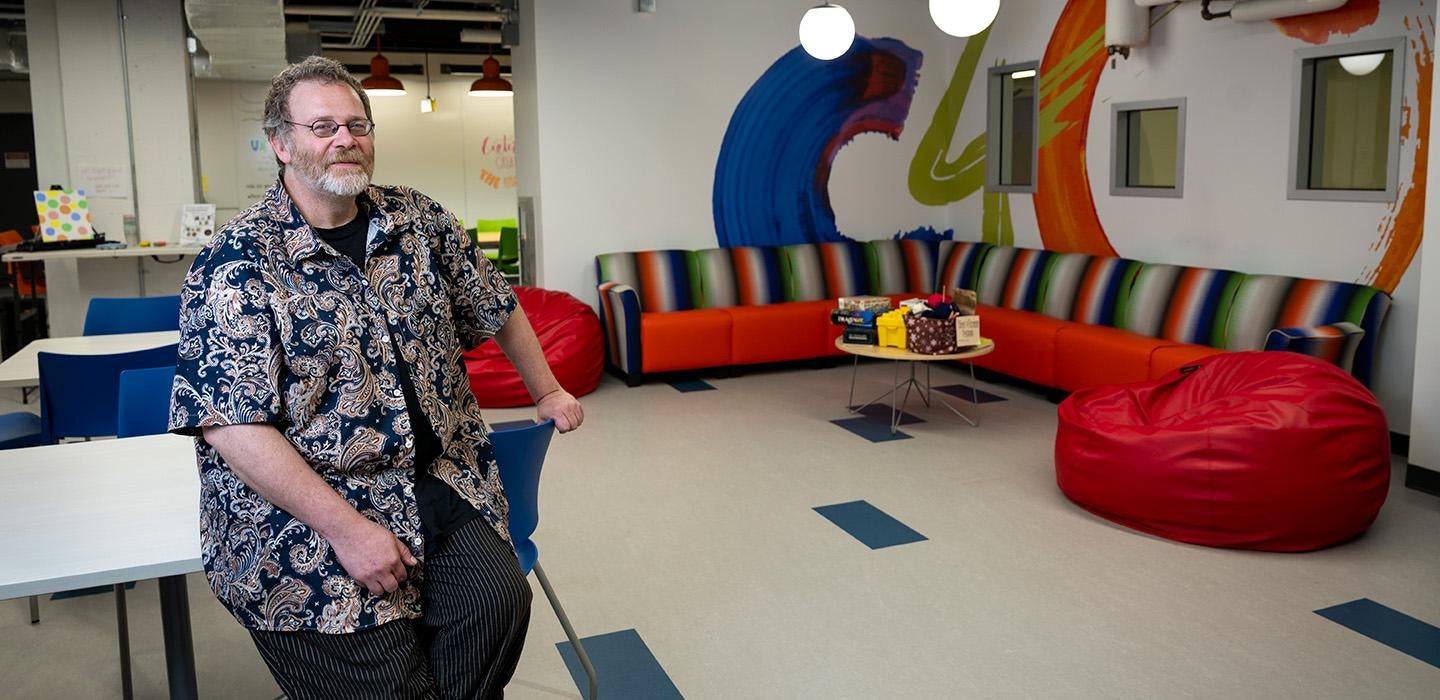
Subscribe to Pittwire Today
Get the most interesting and important stories from the University of Pittsburgh.At a large R1 institution like Pitt, it can be easy for researchers, staff, faculty and students to become siloed. The Center for Creativity (C4C) is a thriving effort that breaks down traditional barriers and adds a unique dimension to Pitt’s research landscape.
Creativity isn’t limited to a specific area of study, and with roughly 7,200 square feet of space across three locations on the Pittsburgh campus, the C4C provides a low-stakes research environment that promotes collaboration and team-building across academic disciplines.
In 2015, Jeanne Marie Laskas, a world-renowned author, distinguished professor of English and founding director of the C4C, saw a need for dedicated spaces that would allow the Pitt community to gather, collaborate and produce creative work.
Laskas, in partnership with the Office of the Provost, set out to create labs that focused on the creative process — places for ideas, inspiration and connection where people weren’t expected to perfect their work but were free to experiment and make mistakes.
By the end of Pitt’s Year of the Humanities in 2016, the center opened its first space, C4C: The Workshop, located in the basement of the University Store.
The Workshop served as a makerspace and pilot for the center, where anyone with a Pitt ID can use free paints, fabric, typewriters, a 3D printer, a pottery wheel, musical instruments and more to explore creative interests.
Pitt, showing its serious ongoing investment in the center, paved the way for it to expand to additional spaces and specific creative focuses.
In partnership with the University Library System, the Text and conText Lab opened in 2021 on the third floor of the Hillman Library. This space’s primary focus is on the production of text, offering visitors access to bookbinding, papermaking, guided programming, a Vandercook proof press and a Columbian press.
The third and most recent space, C4C: The Understory, opened in 2022 in the basement of the Cathedral of Learning. The performance-based space is designed to provide resources for people interested in dance, music, theater, puppetry and other disciplines. The spot features a stage, podcast studio, sewing machines, music practice rooms and instruments for visitors to use.
Pittsburgh community members and faculty from multiple academic backgrounds have used these spaces for various research, academic and teaching programming purposes.
Rachel Kranson, an associate professor and director of Jewish studies in the Department of Religious Studies, collaborated with the University Library System’s Archives and Special Collections to set up an exhibition at the Text and conText space that brought together engravings and reproductions of 1920-1960 editions of the Jewish Daily Forward, which, by the 1920s, had more subscribers than The New York Times. The publication’s legacy endures today as one of the most widely read English and Yiddish-language news sources in the country.
Pitt’s Office of Undergraduate Research and the center also hosted Eve Adams Artist-Scholars in Residence in 2022 at the Text and conText Lab. The undergraduate students, who were interested in producing original research on social justice, used the lab to experiment with different methods of communicating their research to wide audiences.
The School of Computing and Information and the Center for Urban and Social Research have also collaborated with the C4C for several art and data workshops, focusing on how students can use art to explore dynamic, engaging and accessible ways to present research data.
— Donovan Harrell, photography by Tom Altany. Pictured: Erik Shuckers, programming and communication manager for the Center for Creativity, stands in the center's Workshop location.


